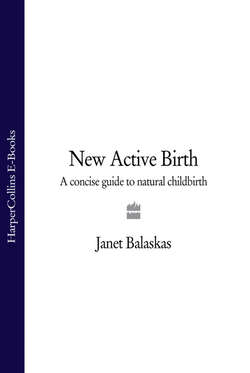Читать книгу New Active Birth: A Concise Guide to Natural Childbirth - Janet Balaskas - Страница 22
Ideal Maternity in Pithiviers, France
ОглавлениеMichel Odent and his staff have provided a setting for women to be active in labour at the maternity unit in the general hospital in Pithiviers in France. Here, for two decades, women in labour have had the freedom to follow their instincts in walking about and finding positions that are suitable and comfortable. He and his midwives, together with expectant mothers, have discovered many means of physical support during labour and delivery which have proved, over the years, to be a tremendous advantage in easing labour and especially delivery. They do not use continuous foetal monitoring, Pethidine, epidurals or forceps. Few episiotomies are given and induction is very rare. Their concept of obstetrics, to try not to disturb the normal physiology, is very different from conventional practice aimed at control. Also the physical and the human environment is very different – the birthing room has a home-like rather than a hospital atmosphere.
In this unit there are about 1,000 deliveries a year. Professional care is the responsibility of Dr Odent and six midwives. The midwives work in pairs for forty-eight hours at a time followed by four days off. Each woman is given her own room throughout her stay and there are few rules. As labour advances, she walks to the birth room which has a low-level platform with many cushions, and a wooden squatting stool. There she is encouraged to remain active and change her position as many times as she wishes.
Most women prefer to walk about, sit on the birthstool, kneel on all fours, squat and lean on their husband or the midwifes for physical support. Water is regarded as important and women, if they like, may take a warm bath or relax in a small pool which is available. No drugs are used, the membranes are not artificially ruptured. Most women adopt an upright position for delivery, usually a supported squat; others give birth on the birthstool or on the low double bed and some give birth in water. With the appropriate supported squat and the minimum disturbance of the expulsive reflex, there are no unnecessary perineal tears and episiotomies are rare.
After the birth, the baby’s bath and the delivery of the placenta, the mother walks with her husband and her newborn back to her own room. Of the 1,000 births that took place in Pithiviers in 1981, only eight babies needed intensive care.
Here is a maternity-care setting close to ideal. It has the safety of hospital delivery as well as the relaxed atmosphere of a comfortable and homely birth room. It is free of the frustrating regulations or limitations of routine hospital practices and is based on understanding of the instinctive behaviour of a woman in labour and her needs. They have a positive approach to an active, physiological birth with a natural outcome. The attendants are well-known to the mother and are constantly available during labour and delivery. Fathers participate and give their support. Women are given the freedom to move and adopt any position they find comfortable and the minimum use of drugs and interventions during labour are needed.
If the majority of women at Pithiviers can experience Active Birth safely and naturally in such a unit, why not elsewhere?
RESULTS OF 898 BIRTHS AT PITHIVIERS IN 1980
Since the time of writing, Michel Odent is no longer living in France and is based in London where his work continues with women giving birth at home. There are now many similar units and the results of their work reflect the same striking contrast to hospitals where obstetric management is still routine.
